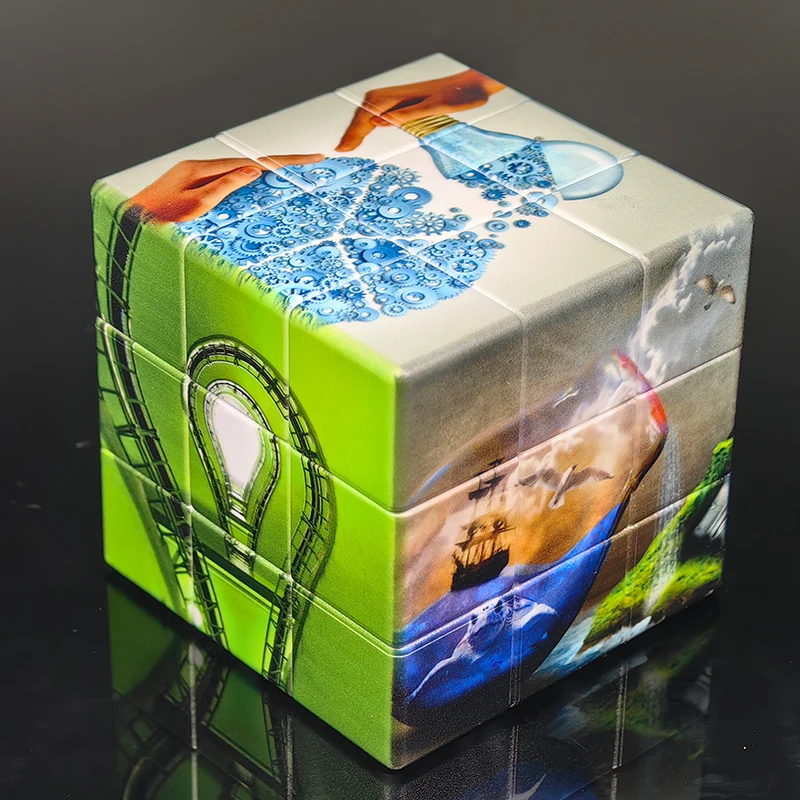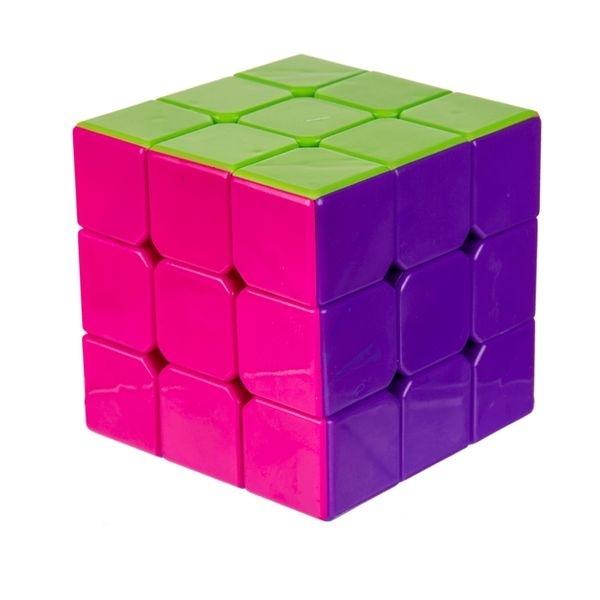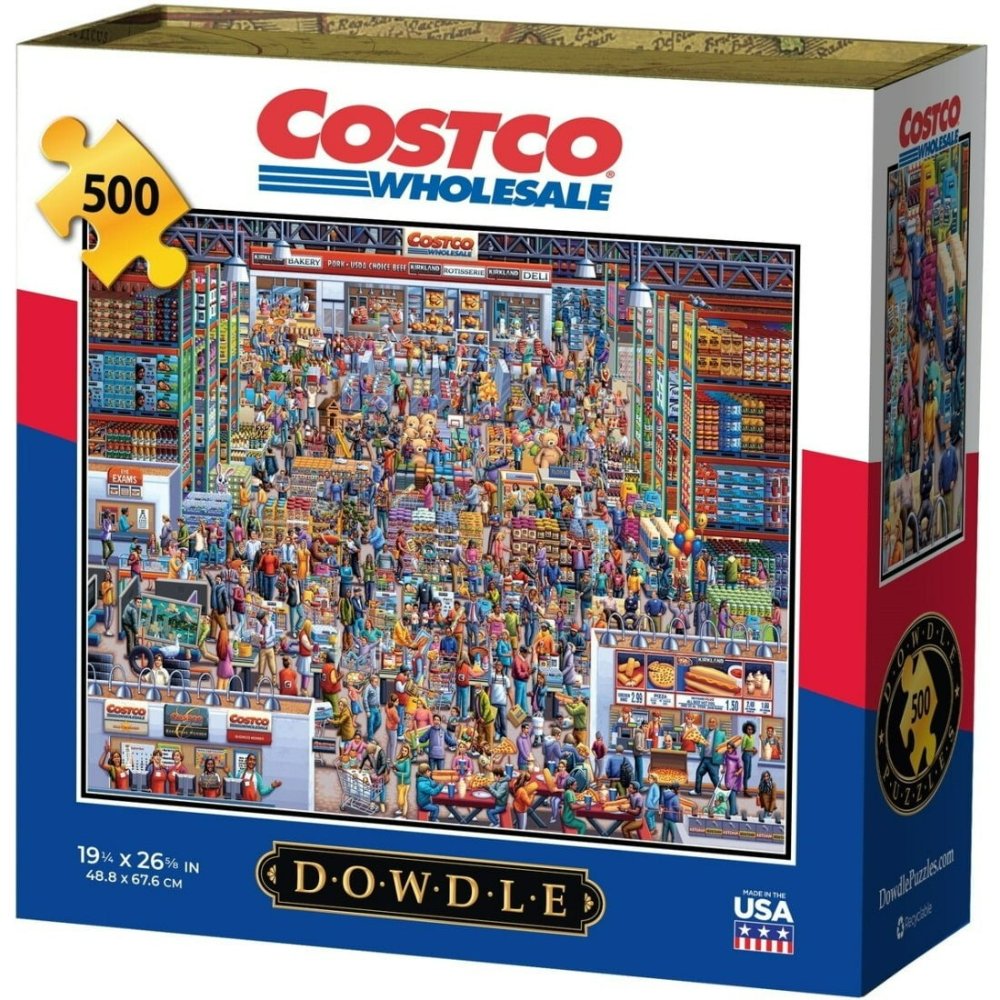Introduction
The Magic Cube Puzzle 3D, commonly known as the Rubik’s Cube, is a fascinating puzzle that has captured the imagination of millions since its invention. It’s not just a toy but a complex challenge that involves spatial reasoning, pattern recognition, and problem-solving skills. This article will delve into the intricate world of the Magic Cube Puzzle 3D, examining its history, mechanics, solving techniques, and its impact on popular culture.
The History of the Magic Cube Puzzle 3D
The Invention of the Rubik’s Cube
The Rubik’s Cube was invented in 1974 by Ernő Rubik, a Hungarian architect and professor of architecture. Rubik created the cube as a teaching tool to help his students understand three-dimensional geometry. Originally called the “Magic Cube,” the puzzle was designed to demonstrate the principles of spatial relationships and rotations. The cube’s initial purpose was to illustrate the concept of “combinatorial mathematics,” which involves studying the different ways in which elements can be arranged or combined.
Rubik’s invention was not immediately successful. Initially, it was a tool for teaching rather than a commercial product. However, its innovative design and the challenge it posed quickly caught the attention of toy manufacturers. In 1975, Rubik patented the cube, and in 1978, it was licensed to the Ideal Toy Corporation. The cube was rebranded as the “Rubik’s Cube” and was released to the international market. The name change helped cement its place in popular culture, and the cube quickly became a global phenomenon.
The Rise in Popularity
The Rubik’s Cube became an instant hit once it hit the market. Its unique combination of simplicity and complexity appealed to a wide audience. The puzzle was not just a toy but a mental challenge that captivated both children and adults. By the early 1980s, the Rubik’s Cube had become a cultural icon, with competitions, solving techniques, and even books dedicated to mastering the puzzle.
During the 1980s, the Rubik’s Cube inspired a wave of similar puzzles and brain teasers, creating a new genre of toys focused on cognitive challenges. The cube also sparked the formation of a competitive community, with speedcubing becoming a popular sport. Speedcubers, individuals who compete to solve the cube in the shortest amount of time, became celebrities in their own right, further fueling the cube’s popularity.
Mechanics and Structure of the Magic Cube Puzzle 3D
Understanding the Cube’s Design
The Rubik’s Cube is a 3D mechanical puzzle consisting of 54 colored squares arranged on six faces. Each face of the cube is a different color, traditionally white, red, blue, orange, green, and yellow. The cube’s structure is composed of a core mechanism surrounded by 26 smaller cubes, known as “cubies,” which rotate around the core. The central mechanism allows the faces of the cube to turn independently of each other, creating a complex array of possible configurations.
The core of the cube consists of a six-armed central axis that holds the cube together. Each arm of the axis has a fixed position, allowing the surrounding cubies to rotate while maintaining their alignment. The edges and corners of the cube are connected to the core through a series of interlocking pieces that enable smooth movement. The cube’s design is both simple and ingenious, providing a robust mechanism that can withstand thousands of rotations without losing its integrity.
The Mechanics of Rotation
The Rubik’s Cube operates on a series of rotations that change the positions of the colored squares on each face. Each face can be turned 90 degrees in either direction, resulting in a total of 43 quintillion possible permutations. The challenge of solving the cube lies in returning it to its original state, where each face is a single, uniform color.
The rotation of the cube involves manipulating the alignment of the cubies. The edges of the cube can be rotated around their respective axes, while the corners can be twisted and turned. These movements are governed by a set of algorithms that dictate the sequence of rotations needed to achieve a desired outcome. Understanding these algorithms is key to solving the cube efficiently.
Solving the Rubik’s Cube: Techniques and Strategies
Basic Solving Methods
Solving the Rubik’s Cube requires a combination of strategies and techniques. The most common method used by beginners is the Layer-by-Layer (LBL) method. This approach involves solving the cube one layer at a time, starting with the first layer and moving upwards to the second and third layers. The LBL method is a straightforward way to approach the puzzle and is often used as a foundation for more advanced solving techniques.
The first step in the LBL method is to solve the white cross on the bottom layer. This involves aligning the white edge pieces with the center pieces on the adjacent faces. Once the white cross is completed, the next step is to solve the white corners, creating a solid white face. After completing the first layer, the solver moves on to the middle layer, positioning the edge pieces correctly. Finally, the top layer is solved, finishing with the yellow cross and yellow corners.
Advanced Solving Techniques
For more experienced solvers, advanced techniques such as the CFOP method offer greater efficiency. CFOP stands for Cross, F2L (First Two Layers), OLL (Orientation of the Last Layer), and PLL (Permutation of the Last Layer). This method is widely used in competitive speedcubing and involves a more detailed approach to solving the cube.
The CFOP method begins with creating a cross on the first layer, similar to the LBL method. However, instead of solving the corners one by one, the solver pairs up the edge and corner pieces in the first two layers. This process, known as F2L, reduces the number of moves required to complete the puzzle. The OLL step involves orienting the last layer’s pieces to match the desired pattern, while the PLL step focuses on permuting the pieces to achieve a solved state. The CFOP method is more complex but allows for faster solving times.
The Cultural Impact of the Rubik’s Cube
The Cube in Popular Culture
The Rubik’s Cube has had a significant impact on popular culture since its inception. Its iconic design and challenging nature have made it a symbol of intelligence and problem-solving. The cube has appeared in numerous films, television shows, and advertisements, often representing puzzles and intellectual challenges. Its distinctive appearance and association with mental acuity have cemented its place as a cultural icon.
In addition to its presence in media, the Rubik’s Cube has inspired a variety of artistic and creative endeavors. Artists have incorporated the cube’s colorful design into their work, creating sculptures, paintings, and even interactive installations. The cube’s influence extends beyond traditional art forms, with its design being used in fashion, graphic design, and product packaging.
The Role of Speedcubing
Speedcubing, the competitive sport of solving the Rubik’s Cube as quickly as possible, has become a major aspect of the cube’s cultural impact. The World Cube Association (WCA) oversees official speedcubing competitions, where participants from around the world compete in various events, including the classic 3×3 cube, 2×2 cube, and other puzzle variations. Speedcubing has developed a dedicated community of enthusiasts who push the boundaries of solving techniques and times.
The popularity of speedcubing has led to the creation of numerous records and milestones. Top speedcubers have achieved astonishing solving times, with the world record for the 3×3 cube currently standing at just under 4 seconds. The sport has also seen innovations in cube design and solving methods, further advancing the field and inspiring new generations of cubers.
The Future of the Magic Cube Puzzle 3D
Innovations and Variations
The Rubik’s Cube continues to evolve with new innovations and variations. Manufacturers have developed a range of different cube types, including larger cubes, twisty puzzles, and electronic versions. These variations offer new challenges and experiences for enthusiasts, expanding the scope of the original puzzle. Some cubes feature advanced mechanisms for smoother turning and reduced friction, enhancing the solving experience.
In addition to physical variations, digital and virtual versions of the Rubik’s Cube have emerged. These digital puzzles allow users to solve the cube on screens or through virtual reality, offering a new way to experience the classic challenge. The integration of technology with the Rubik’s Cube demonstrates its enduring appeal and adaptability to modern trends.
Educational and Therapeutic Uses
The Rubik’s Cube has also found applications beyond entertainment and competition. It is going to use as an educational tool in classrooms to teach concepts such as geometry, algebra, and algorithms. The cube’s problem-solving nature helps students develop critical thinking skills and spatial awareness. It is also going to use in therapeutic settings to improve cognitive function and hand-eye coordination.
Educational programs and workshops that focus on the Rubik’s Cube offer students and participants the opportunity to engage with math and science concepts in a hands-on and interactive way. The cube’s versatility as an educational tool highlights its value beyond its status as a popular puzzle.
Conclusion
The Magic Cube Puzzle 3D, or Rubik’s Cube, is much more than a simple toy. Its rich history, intricate mechanics, and cultural impact make it a fascinating subject of study. From its invention by Ernő Rubik to its status as a global icon, the cube has left an indelible mark on popular culture and intellectual pursuits. Its various solving techniques and competitive sport of speedcubing continue to captivate and challenge enthusiasts around the world. As the cube evolves and adapts to new technologies and educational uses, its legacy as a symbol of ingenuity and problem-solving endures.





